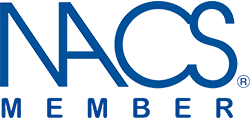Managing inventory is a task that almost every business has to tackle, but it can sometimes be a bit tricky, no matter how big or small your business is or what industry you’re in. Sadly, many businesses struggle with keeping their inventory in check, which can cause all sorts of problems like having too much stock, running out of important items, and spending money on unnecessary things. And let’s face it, these issues can eat into your profits and tie up your money in unsold goods.
But hey, don’t worry! I’ve got you covered with some friendly advice on how to avoid these problems and effectively manage your inventory. Just follow these 10 essential tips, and you’ll be able to streamline your processes, make smart decisions about your inventory levels, and ultimately improve your bottom line!
1. Prioritize Your Inventory:
By categorizing and prioritizing your inventory based on factors like demand, profit margin, and lead time, you can optimize your stock levels. This means focusing on the items that are most popular or profitable for your business and adjusting your inventory accordingly. To make this process easier, you can use the ABC analysis method. It involves grouping your products based on their value and importance:
- Group A: These are high-value items that make up a small percentage of your inventory and have a slower turnover rate.
- Group B: These items have moderate value and move faster than Group A, but slower than Group C.
- Group C: These are low-value items that make up a large percentage of your inventory and have a quick turnover rate.
By categorizing your inventory this way, you’ll be able to prioritize effectively and improve your inventory management processes.
2. Keep Tabs on Your Product Details:
Understanding and effectively managing your inventory is necessary for success. By having a comprehensive grasp of your products, you can make informed decisions regarding ordering, pricing, and restocking. It’s important to keep track of various details for each product, such as SKUs, descriptions, barcode data, suppliers, countries of origin, lot numbers, and costs. Having this information readily available empowers you to optimize your inventory management process and run your business smoothly.
3. Audit your Inventory:
Keeping track of your inventory is important for effective inventory management. One way to achieve this is by conducting regular and detailed inventory audits. These audits help you spot any differences and enable you to take appropriate action. To perform an inventory audit, you simply need to count all the items in your inventory and compare the numbers with your inventory records. The frequency of these audits can vary depending on your business needs. Some businesses opt for yearly audits, while others prefer monthly, weekly, or even daily counts for their popular products. The choice is yours!
4. Analyze Supplier Performance:
Keep an eye on how well your suppliers are doing in terms of delivery times, prices, and quality. This helps you identify the top-performing ones and negotiate better deals. Using a supplier scorecard is a good method, as it not only helps with data-based decision-making but also strengthens your relationships with suppliers. If you face any issues with certain suppliers, talk about it openly and try to find solutions together. Remember, if needed, you can explore other suppliers or handle potential inventory problems and the risk of running out of stock.
5. Discover the 80/20 Inventory Rule:
The 80/20 rule is a valuable tool for prioritizing your inventory and focusing on the items that bring in the most profits. According to this rule, 80% of your profits come from just 20% of your stock. So, it’s important to give special attention to this 20%. Wondering how to put this rule into action? Well, you can start by analyzing your sales data or utilizing demand forecasting tools to identify which products are likely to be popular. This way, you’ll be able to adjust your inventory levels smartly and make the most of your business.
6. Be Consistent in Processing Incoming Inventory:
A well-organized system for getting and handling new inventory is crucial for any retail business. It makes sure that your inventory is recorded accurately and your products are ready to sell. Remember, it’s key to train your whole team properly so everyone knows what to do. If you set up a standard process that everyone follows, ordering and receiving inventory becomes smooth and efficient. So, invest time in creating a consistent and easy-to-follow system—it’ll pay off for your business in the long run.
7. Track Sales:
Imagine having a magical tool that not only counts your money but also provides valuable insights about your sales. That’s exactly what POS billing software does for retail shops! It tracks your sales data, giving you a clear picture of what items are selling, how much you’re selling, and the state of your inventory. It’s like having a retail superpower!
With this software, you can dive into your sales reports and analyze the data like a pro. You’ll discover which products are flying off the shelves and which ones might need a little boost. Armed with this knowledge, you can make smarter decisions about restocking and managing your inventory. No more guesswork or relying on gut feelings – let the data guide you to success!
By keeping a close eye on your sales trends, you’ll be ahead of the game. You’ll know which products are hot, allowing you to stock up on them to meet the demand. On the flip side, you can identify underperforming items and strategize on how to give them a sales boost. It’s all about using the power of data to fuel your business growth. So, don’t just count your money at the end of the day. Embrace the power of POS billing software, track your sales data, and make informed decisions that will take your retail shop to new heights!
8. Restock Your Orders:
To stay on top of your inventory management game, it’s crucial to take charge of your restocking process. Instead of relying solely on suppliers to handle it for you, why not take the reins yourself? While it might seem convenient to let someone else handle restocking, it’s important to remember that suppliers may not have the same sense of urgency or priorities as you do. By taking control and restocking on your terms, you can ensure that your inventory is always stocked when you need it. Say goodbye to potential delays or stockouts caused by supplier hiccups, and enjoy the peace of mind that comes with being in charge of your inventory restocking.
9. Invest in Inventory Management Software:
Using a simple spreadsheet or paper to keep track of inventory might work for a few tiny businesses, but let’s be honest—it’s not the most efficient, accurate, or practical method for most companies. That’s where inventory management software comes in, making your inventory management a breeze. This software does all the heavy lifting by automatically tracking inventory levels, orders, and shipments in real time. Plus, it provides you with up-to-date data that you can use to make smart decisions about managing your inventory effectively. With this tool at your disposal, you can rest assured that you’ll always be well-stocked to meet the demands of your customers.
10. Use Tools That Integrate Well:
When you’re choosing a point-of-sale (POS) system for your business, it’s crucial to find one that seamlessly integrates with your operations. At JMSC POS, we take pride in offering the best POS solutions that are specifically designed to work well with a variety of tools. Here are a few compelling reasons why this integration is so important:
- Streamlined Operations: By choosing a POS system that integrates smoothly with your existing tools, you can streamline your business operations. This means less time spent on solving human errors or reconciling information from different systems, allowing you and your team to focus on what truly matters – serving your customers.
- Enhanced Efficiency: Integration between your POS system and other tools leads to increased efficiency. You’ll experience improved workflows and reduced errors, as data seamlessly flows between different systems. This efficiency boost saves you valuable time and resources, enabling you to accomplish more in less time.
- Data-driven Insights: A well-integrated POS system can provide you with valuable data-driven insights about your business. By analyzing the data collected from various integrated sources, you can make informed decisions, identify trends, and better understand your customers’ preferences. These insights empower you to refine your strategies and drive growth.
- Scalability and Flexibility: Your business needs are likely to evolve, so it’s essential to choose a POS system that can grow and adapt with you. With integration capabilities, you can easily add new tools or expand your operations without disrupting your entire system. This scalability and flexibility ensure that your POS solution remains effective and future-proof.
To experience the benefits of our POS system, you can book a free demo at JMSC POS. There, you’ll find more detailed information about how our integrated solution can add value to your business and why it stands out from other alternatives.







